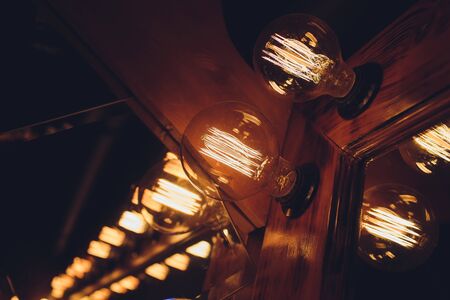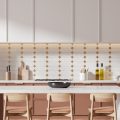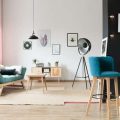Understanding Ambience in British Interior Design
In British interior design, ambience is far more than a fleeting trend—it is a fundamental element that shapes how spaces are experienced and enjoyed. From the cosy corners of a classic Victorian terrace to the open-plan layouts of contemporary city flats, the role of ambience is central to creating homes that feel inviting and lived-in. The British approach to interiors places significant emphasis on mood and atmosphere, recognising these qualities as essential for both comfort and hospitality. Whether entertaining guests or winding down after a long day, the right ambience fosters warmth, ease, and a distinct sense of place. By carefully considering elements such as lighting, colour, and texture, British homeowners have long mastered the art of turning even modest rooms into sanctuaries of relaxation. In this tradition, table and floor lamps emerge as key players, offering versatile solutions to subtly shape the character of any space while enhancing the quintessentially British values of warmth and welcome.
2. Historical Influences on Lighting in UK Homes
British interiors have long been shaped by a deep respect for architectural heritage, with each era leaving its distinctive mark on how lighting and ambience are approached. From the refined symmetry of Georgian townhouses to the opulent details of Victorian villas, the evolution of domestic lighting has always been closely tied to broader trends in architecture and societal values.
Georgian Era: Symmetry and Subtlety
The Georgian period (1714–1830) is renowned for its emphasis on balance, proportion, and understated elegance. Homes from this era often featured large sash windows, high ceilings, and decorative cornices, creating spaces that welcomed natural light during the day. Yet, as evening fell, the need for artificial illumination became clear. Candles and oil lamps were placed strategically to highlight architectural features without overwhelming the room’s calm ambience. This legacy endures today, with table and floor lamps used to provide soft pools of light that accentuate period mouldings or fireplaces.
Victorian Era: Ornate Detailing and Layered Lighting
The Victorian age (1837–1901) introduced a more elaborate approach to interior design. With advances in gas lighting and later electricity, British homes began to embrace richer colours, heavier drapery, and ornate furnishings. Lighting became both functional and decorative. Chandeliers took centre stage in formal rooms, but table lamps and standard lamps (the British term for floor lamps) allowed homeowners to create intimate corners within larger spaces—a practice still favoured in British interiors seeking warmth and character.
Comparing Georgian and Victorian Lighting Approaches
| Aspect | Georgian | Victorian |
|---|---|---|
| Main Light Source | Candles, oil lamps | Gas lights, early electric bulbs |
| Ambience Style | Subtle, even illumination | Layered, dramatic contrasts |
| Lamp Placement | Emphasise symmetry; highlight features | Create cosy nooks; decorative focus |
| Materials & Finishes | Simplicity—brass or glass holders | Ornate—coloured glass, intricate metalwork |
The Enduring Influence Today
This rich history has cultivated a uniquely British attitude toward interior lighting—one that prizes ambience over brightness. Homeowners continue to draw inspiration from historical styles when selecting table and floor lamps. These fixtures are not just practical solutions; they honour tradition while providing flexible tools to transform the atmosphere in any room.

3. The Practical Benefits of Table and Floor Lamps
When it comes to creating welcoming and functional British interiors, table and floor lamps offer far more than just aesthetic value. Their practical advantages are particularly significant in homes where flexibility, zone lighting, and the preservation of heritage features are key considerations.
Flexibility for Ever-Changing Spaces
Unlike fixed ceiling lights or wall sconces, table and floor lamps can be easily repositioned to suit changing needs and layouts. In the typical British home, where rooms often serve multiple purposes—from reading nooks to evening entertaining—this adaptability ensures that lighting can always be tailored without the need for invasive electrical work or permanent alterations.
Zone Lighting for Comfort and Efficiency
British interiors frequently rely on ‘zone lighting’ to define areas within a room. Table lamps on sideboards or desks create intimate pockets of light perfect for reading or working, while floor lamps can brighten darker corners or highlight architectural details. This targeted approach not only enhances comfort but also reduces energy consumption by allowing homeowners to illuminate only the spaces in use.
Preserving Heritage Features
Many British properties—especially period homes—boast original mouldings, fireplaces, and timber beams that should be celebrated rather than overshadowed. Table and floor lamps provide gentle, indirect lighting that protects these delicate features from harsh glare or excessive heat generated by stronger overhead lights. By using portable lamps instead of installing new fixtures, homeowners can maintain the integrity of historic interiors and avoid damaging irreplaceable elements.
Summary
The practical benefits of table and floor lamps make them indispensable tools in shaping both the look and functionality of British interiors. Their flexibility supports dynamic lifestyles, zone lighting brings comfort and efficiency, and their gentle illumination helps protect treasured heritage features—all essential considerations in the unique context of UK homes.
Aesthetic Appeal and Personalisation
Table and floor lamps are not just practical light sources; they serve as powerful tools for expressing personality and taste within British interiors. In a country where tradition and individuality often blend seamlessly, choosing the right lamp can make a significant impact on both the look and feel of a room. Lamps offer homeowners the opportunity to select designs that reflect their unique style, whether that means opting for a classic brass base to complement Victorian décor or choosing a contemporary ceramic lamp to add a modern twist.
British décor is renowned for its rich heritage—think layered textiles, detailed mouldings, and a careful balance of old and new. Lamps play an important role in this tradition by acting as stylish focal points that draw attention while still blending harmoniously with existing design elements. For instance, a patterned lampshade may echo the motifs in traditional wallpaper, while an industrial-style floor lamp could provide contrast in an otherwise period-inspired setting.
How Lamps Complement British Interior Styles
| Lamp Style | British Décor Tradition | Personalisation Tip |
|---|---|---|
| Classic Brass Table Lamp | Victorian & Edwardian Homes | Add pleated shades for vintage charm |
| Modern Ceramic Floor Lamp | Contemporary Flats & Lofts | Choose bold colours to showcase personality |
| Art Deco Glass Lamp | 1930s Period Properties | Select geometric patterns for authenticity |
| Industrial Metal Floor Lamp | Converted Warehouses & Studios | Opt for exposed bulbs to highlight features |
| Rustic Wooden Table Lamp | Cottages & Country Houses | Pair with neutral linen shades for warmth |
The key to successful personalisation lies in thoughtful selection. By considering how different lamp styles interact with furniture, colour schemes, and architectural details, homeowners can create spaces that feel both distinctly British and entirely their own. Whether used as subtle accents or bold statements, table and floor lamps offer endless possibilities for enhancing aesthetic appeal while telling the story of those who live within the home.
5. Creating Cosy Corners: The British Love of ‘Hygge’ and Comfort
In the heart of every British home lies a desire for comfort, warmth, and an inviting atmosphere—a concept not unlike the Danish idea of ‘hygge’. While hygge has become a global trend, the British have long embraced their own version through thoughtful interior design, with table and floor lamps playing a pivotal role. These lighting fixtures are not just functional but essential tools in cultivating snug nooks and restful retreats throughout the house.
The soft glow from a well-chosen lamp can instantly transform a chilly corner into a sanctuary, perfect for curling up with a good book or enjoying a cup of tea on a drizzly afternoon. Unlike harsh overhead lights, table and floor lamps offer gentle illumination that highlights textures, warms colours, and creates depth within a room. This subtle lighting enhances the natural cosiness of British interiors—be it in a classic Victorian terrace or a modern flat overlooking the city.
Moreover, the act of arranging lamps in alcoves, beside armchairs, or next to fireplaces is almost ritualistic in British homes. It speaks to an enduring appreciation for layered lighting, where pools of light overlap to create inviting pockets of space. These illuminated corners encourage moments of pause and relaxation, whether you’re entertaining friends or unwinding after a long day.
British culture values comfort deeply—think thick knitted throws, well-worn leather chairs, and steaming mugs of tea—all complemented by the atmospheric glow of lamps. By choosing lighting that enhances this sense of homeliness, you’re not merely brightening a room; you’re participating in a tradition that celebrates wellbeing and togetherness at home. In this way, table and floor lamps are more than decorative—they’re an essential part of what makes British interiors so irresistibly cosy.
6. Sustainability and Energy Efficiency
In contemporary British homes, the push towards sustainability is more than a trend—it’s an essential part of interior design and daily living. When selecting table and floor lamps, eco-friendly lighting choices are increasingly important for both environmental reasons and household efficiency. The move away from traditional incandescent bulbs to LED technology has made a significant impact on energy consumption across the UK. LEDs not only use considerably less electricity but also have a much longer lifespan, reducing both running costs and waste. Opting for lamps that support LED bulbs allows homeowners to create the warm, inviting ambience characteristic of British interiors without compromising on sustainability.
Responsible use of lighting goes beyond simply choosing efficient bulbs; it’s about thoughtful placement and usage as well. Positioning table and floor lamps strategically can minimise reliance on overhead fixtures, allowing for targeted illumination where it’s most needed. This approach helps reduce unnecessary energy consumption while still achieving the layered, atmospheric lighting that defines British home style. Additionally, many modern lamps now feature dimmable settings or smart controls, empowering residents to tailor light levels according to time of day or activity—further conserving energy.
By prioritising sustainability in their lighting decisions, British homeowners can enjoy beautiful, comfortable spaces while also contributing positively to broader environmental goals. The integration of advanced LED technology and mindful usage practices ensures that the timeless ambience of British interiors is maintained with a forward-thinking approach to resource conservation.


